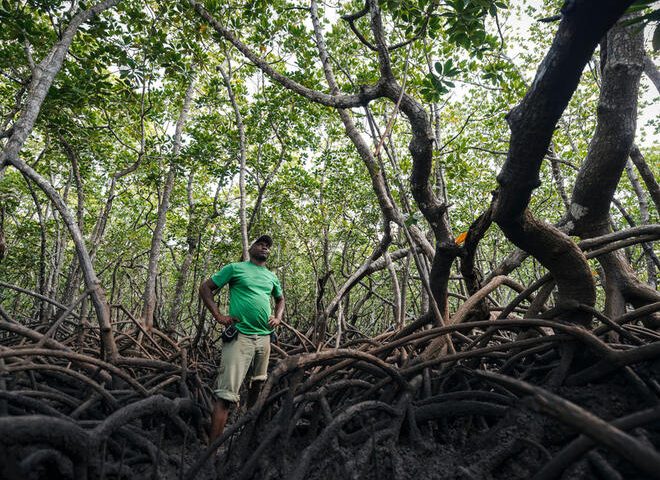Mangroves are providers—for nature and people. Around the world, communities depend on mangroves for food, protection, and income. All together, these ecosystem services generate $2.7 trillion for the global economy every year and sustain millions of people.
These coastal forests provide for communities and the communities in turn protect the mangroves. It’s a relationship found all over the world across the more than 100 countries where mangroves guard the coast. Here are four places where a snapshot tells the story.
Fiji
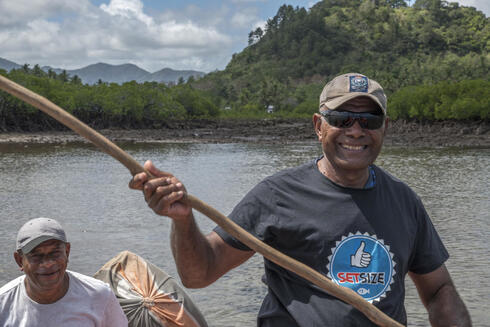
On the south pacific islands of Fiji, communities depend on fishing the Great Sea Reef for food and income – both of which depend on mangroves. Mangroves serve as nurseries where young fish grow up, protected by intricate root systems, before swimming out to reefs. Those roots also hold down dirt and sediment that otherwise would wash offshore and smother the reef-building corals. Protecting and restoring mangrove forests is a matter of maintaining Fijian traditions and way of life long into the future.
Mozambique

In Mozambique, mangrove roots grow in foot-high tangles and trees can top out at over seven stories. Here, communities work together to protect vulnerable wildlife and carefully manage the legal harvest of fish and shellfish they need to survive. Locals organize monitoring of forests to keep animals, like pinkbacked pelicans and wattled cranes, away from poachers. In partnership with the WWF-CARE alliance, a group of women established and run a small banking association. In times of need, families can now fall back on the community savings and loans for financial assistance and continue to protect their natural resources from overexploitation.
Pakistan – Indus Delta
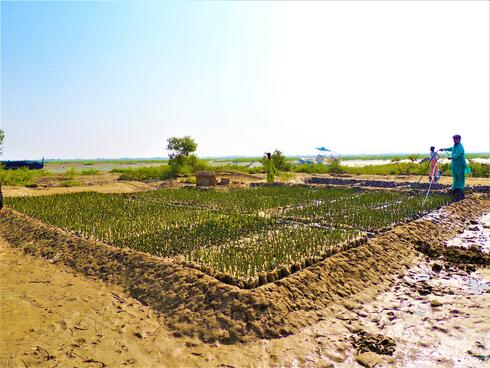
In communities along the verdant coast of Pakistan’s Indus Delta, homes sit just 6 feet above sea level. Being close to the sea and rivers— full of fish, shellfish, and even the endangered indus river dolphin—is important for delta communities. But the location also makes people extremely vulnerable to sea level rise and severe weather events, like cyclones and high winds. With the climate in crisis, these events are only becoming more severe and more frequent. Communities, with support from WWF-Pakistan, have replanted over 24,000 acres of mangroves to improve protection from extreme weather and have increased community knowledge to encourage sustainable use of the ecosystem.
Papua New Guinea – Madang Province
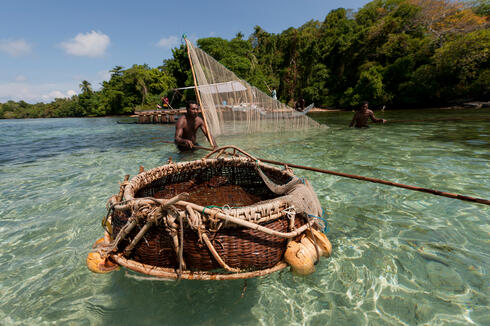
The Madang province on northern coastline of Papua New Guinea is one of the most diverse places in the world for mangrove species. The different tree varieties compete for dominance depending on how close land is to the sea, how much shade is available, and even how far the water rises during high tide. But this amazing diversity is endangered due to timber harvesting and overexploitation of wildlife. To counter these threats, local environmental leaders from 15 communities across the province work with WWF-Pacific to share knowledge and learn how to best protect mangrove ecosystems. By collaborating and problem solving, communities benefit from healthier mangroves, fish, and shellfish stocks across almost 200 miles of coastline
We all benefit from this collaboration between people and nature because mangroves help the whole world. Mangroves are excellent at storing carbon deep in their rich soils, which helps to slow down climate change.
Mangrove communities play a big role, but so can those far away from these coastal forests: Commit to lowering the impact of climate change by joining WWF’s pledge to reduce food waste and look for renewable energy alternatives to fossil fuels.
WWF is dedicated to supporting these forests and communities both directly, and through programs like the Global Mangrove Alliance which promotes the protection of these valuable ecosystems at multiple levels of community, governance, and research.
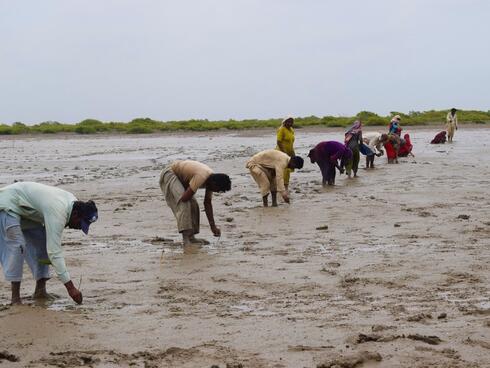
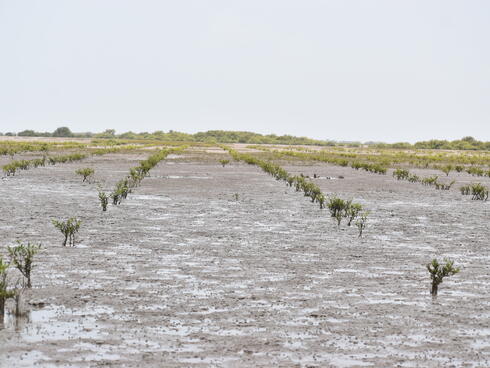
Enviroshop is maintained by dedicated NetSys Interactive Inc. owners & employees who generously contribute their time to maintenance & editing, web design, custom programming, & website hosting for Enviroshop.
